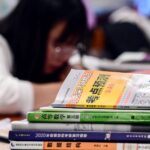U.S. universities operating in China say they are given the freedom to teach what they like in class, but face restrictions such as internet censorship, according to a report by an independent, nonpartisan U.S. agency.
In the recent report released by the Government Accountability Office (GAO), its survey of 12 U.S. universities found that while administrators had control over curriculum content, fewer than half of them had unrestricted access to the internet.
For example, at one of the universities reviewed by GAO for the survey, users were unable to access Google’s search page and other sites that were available to users at other universities.

Source: ‘U.S. Universities in China Emphasize Academic Freedom but Face Internet Censorship and Other Challenges’ report/U.S. Government Accountability Office
At the universities which lacked uncensored internet access, faculty members and students told GAO that due to the constraint, they sometimes faced difficulties when it comes to teaching, conducting research, and completing assignments.
In the report, the agency found that besides the limited internet access, “universities generally emphasise academic freedom at their institutions in China and, in most cases, include language seeking to protect these or other freedoms in written agreements and other documents”.
According to one university administrator, the Chinese government required that they keep a record of internet usage by students, faculty, and staff. However, they added that the government has yet to ask them for the records.
Meanwhile, other university administrators told the agency that they had not been asked to monitor internet usage and were unaware of such a requirement.
#IssuedThisWeek China: U.S. Universities in China Emphasize Academic Freedom but Face Internet Censorship and…https://t.co/MmpRyPNIHd
— U.S. GAO (@USGAO) October 1, 2016
The survey found that depending on how the institution is set up, some universities enjoyed more freedom, such as New York University and Duke University, which operate full branch campuses separate from their partnering Chinese universities.
GAO investigators found that “members of universities we reviewed indicated they have freedoms on campus that do not exist beyond it, suggesting that they operate within a protected sphere in China. But the universities clearly vary in this regard, with a few seeming to be less subject to influence from Chinese entities than others”.
“One faculty member told us he and his colleagues intentionally introduced class discussions on politically sensitive topics to test whether this would trigger any complaints or attempted censorship,” said the report.
Constraints on Chinese Campuses https://t.co/aUAb77irKc by @insidehighered #HigherEd #China
— The OBHE (@theobhe) September 29, 2016
Instructors who have had experience teaching at Chinese universities that were not linked to U.S. universities noted that self-censorship was common at local institutions, saying that they were expected to avoid discussing certain sensitive political topics, such as Tiananmen Square or Taiwan, in class.
At many of the U.S. institutions, though, students noted that they could have engaging dialogue with faculty, discuss sensitive topics, and freely access information there, unlike at Chinese universities.
There are some universities, however, which admit to self-censorship – Mirta Martin, President of Fort Hays State University, which has partnerships in three Chinese provinces, told a U.S. Congress committee hearing last year: “While we stay away from hot-button topics like Tibet or Taiwan, we do include topics such as the environment, especially pollution […] and branding and market, including the concept of fake or imitation products.”
“Tiananmen Square is the only topic our faculty members have chosen to avoid, not at anyone’s request, but because it is believed to be too sensitive in China,” she added.
US universities in China have #academic freedom but face #internet #censorship – report https://t.co/3xW4Elee2a
— UniversityWorldNews (@uniworldnews) September 29, 2016
The review involved interviews with over 190 faculty members, students, and administrators at New York University Shanghai (NYU Shanghai), Carnegie Mellon University in Guangzhou, Duke Kunshan University, Wenzhou-Kean University, Missouri State University in Dalian, New York Institute of Technology, Northwood University, Fort Hays State University, Rutgers University, University of Miami, University of Michigan, and the University of Pittsburgh.
Half of the institutions surveyed were public, while the other half were private non-profit, and had a total of more than 6,500 students enrolled in undergraduate and graduate courses from 2014-2015.
At the time of the survey, the majority of students at the institutions were Chinese (90 percent), while less than six percent were from the U.S. As for faculty, around 60 percent were U.S. citizens, some 16 percent were Chinese, and the rest were from other countries.
Image via YouTube
Liked this? Then you’ll love these…
China on track to overtake UK as 2nd most popular study destination
China kicks off international scholarships to boost education in Silk Road region








